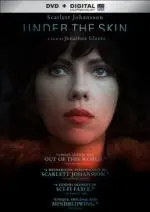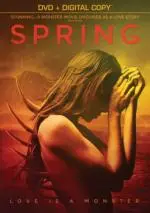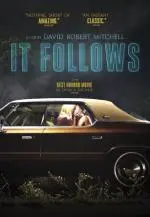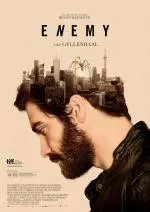So over the past couple of years I’ve seen a lot of innovation in literature, and in film—especially with horror, and similar genres. What I’d like to talk about today is how you can embrace new movies and allow their visionary directors to inform, and inspire your fiction. Here are a few films that really resonated with me, and the ways they already have, or could influence my future writing projects—and your work as well.
![]() THE REVENANT
THE REVENANT
SYNOPSIS: A frontiersman on a fur trading expedition in the 1820s fights for survival after being mauled by a bear and left for dead by members of his own hunting team.
Stylistically, this is a stunning movie, so many quiet moments spent in the outdoors, showing us nature, in all of its danger and glory. Leonardo DiCaprio won an Oscar for his role. Tom Hardy was equally brilliant. What can we learn from this movie?
• Stuck and not sure what to do? Throw a bear into your story. Or as my Pulitzer-nominated professor Dale Ray Phillips used to say, “Put a sasquatch in there.” The moment that we see that bear and the fight, it changes the narrative, threatens to end the story right there. It is intense, it is believable, and everything that comes after it is a direct result of this confrontation.
• Take those moments in the grandeur of nature to slow down and give your reader a breath, a moment of peace. It’s always a good idea to break up the intense moments—the violence, the battles, the horror—with contemplation and silence. It is a great contrast to the darkness and intensity in other places of your story.
• At what cost? Look at what happens to our protagonist, the price he has to pay along the way, and ask yourself about the obsession that is currently plaguing your own protagonist. Is it worth it? Is it all that can be done? Is it destiny or choice? And at the end of that story, what has happened to your hero (or anti-hero) to change them, what has been resolved? That pain and suffering is powerful.
![]() UNDER THE SKIN
UNDER THE SKIN
SYNOPSIS: A mysterious woman seduces lonely men in the evening hours in Scotland. Events lead her to begin a process of self-discovery.
Another beautiful film, abstract at times, there is a lot we can learn about misdirection, mood, theme, atmosphere and the truth—as well as the complexity of humanity, the good and the bad. Scarlett Johansson in the role of her career.
• You can be abstract. You don’t have to explain everything—either in the head of your protagonist or directly to your audience. You can show us moments, slices of life, sensory details—and leave the interpretation up to us. You don’t have to give it all away. Let your reader explore, hunt, and decipher as you slowly give them one clue after another.
• You can have a twist ending if it is EARNED. The end of this film was shocking for sure, but if I look back to everything that came before it, it makes sense, I can see how we got there, it’s not a cheap trick. Be sure that you DO give us clues, bread crumbs, hints as we follow your protagonist, as you unpack your story. You can shock us, but we still need to be able to say, “AH. Yes. I get it. It was there all along.”
• There's a constant battle between broad appeal (a universal story and understanding) and something specifically deviant (and personal) to you narrator. Finding that sweet spot between unique and familiar, weird and normal, universal and specific is not easy. But those are some of the best stories, right? We’ve all heard of vampires, werewolves, and serial killers—how can you make it your own? Look at Red Moon, Salem’s Lot, and All the Beautiful Sinners, for example.
![]() SPRING
SPRING
SYNOPSIS: A young man in a personal tailspin flees the US to Italy, where he sparks up a romance with a woman harboring a dark, primordial secret.
What a beautiful and haunting movie. So many surprises, and yet, they show us what’s going on right from the beginning. Despite this, we are still hypnotized.
• When it comes to your monster, whether it is supernatural or human, you have two choices, really—show us the creature, or aspects of it, right away, and let us follow it, fascinated to see the who, what, when, where and why; or, hide it from us, waiting for the reveal and twist until the end. Both can work, but they are two very different approaches. It's Dexter vs. The Sixth Sense. Your call.
• With this film, can you see the heart, the love, the desire? It’s part of what drives this story. The couple, they like each other, they lust for each other, and by the end—they love each other. But how can it work? Scene by scene, we see the horror, and yet, we root for them to stay together, for her to not push him away, even as she feeds, as she struggles to maintain control. It’s Beauty and the Beast with a role reversal, set in contemporary times.
• Find a new location! There is so much to enjoy in watching this tale set in Italy, a location I don't usually get in contemporary horror (or Under the Skin, set in Scotland). The water, the food, the city, the people, the culture—it’s wonderful, and immersive. Reach outside of your comfort zone, or, if you are from a different country, one not typically represented in mainstream fiction, go for it—share it with us, teach us something, and show us your love for place and time. Use your childhood, your travels and your imagination.
![]() EX MACHINA
EX MACHINA
SYNOPSIS: A young programmer is selected to participate in a ground-breaking experiment in synthetic intelligence by evaluating the human qualities of a breath-taking humanoid A.I.
Another recent favorite, there is so much going on in this film to love. How can it help you with your storytelling?
• Whatever science fiction you are going to write, find a way to make it new, fresh, and innovative. A.I. isn’t a new concept, but the ways this film shows us the technology, the way the filmmakers get us to care and feel strong emotions, to root for Ava—that’s done scene by scene, through conversations, and slowly building revelations.
• Some of the best endings, in my opinion, are the ones that echo out in time, a stone in water, rippling out into space, farther and farther. I love how this movie ends (really, all of the films mentioned) as it continues—the story is not done, simply beginning. And the consequences of it all? Who knows! Only time will tell.
• Again, mix up your settings. Why sit in a lab in a complex, when you can move the narrative to a more intimate home in the woods, miles from anyone else. That helps to build the tension right from the first scenes—that isolation, and sense of (false) safety. Don’t go with the obvious—in setting, or anything else.
![]() IT FOLLOWS
IT FOLLOWS
SYNOPSIS: A young woman is followed by an unknown supernatural force after a sexual encounter.
A bit of old school horror here, with some contemporary touches, which makes this film another great example of how to create and innovate.
• Don’t be afraid to pay homage to classic stories, novels, and films in your work. But just use it as a jumping off point for your own voice, your own take, and innovative ways to make the story your own. Use your strengths as a writer to build upon classic plots, tropes, characters, and settings—taking it in new directions. And make it personal.
• I love the idea of the horror, the evil, being something that cannot be stopped. It can only be redirected. It’s coming, and there is nothing you can do to kill it, so you have to get the mark off of you, transfer it, reassigning the presence to somebody else. It’s not an easy decision, and there is guilt for sure, but when it comes down to survival, you do what you have to do in order to live.
• A ticking time bomb is always a good way to create tension. There are many ways to do this—an actual bomb, sometimes on a BUS, an asteroid hurtling toward Earth, a woman tied between two tractor trailers, etc.
![]() ENEMY
ENEMY
SYNOPSIS: A man seeks out his exact look-alike after spotting him in a movie.
What a weird, wild film. It is not at all what you think at first, and that’s a good thing. I really enjoyed Jake Gyllenhaal’s performance in this film.
• The truth is a slippery creature. As we go back and forth between the many different people, places and scenes, the truth is always one step ahead of us. As we get to the end of the film, it is all explained, but you almost have to go back and watch it again to see all of the layers that have been applied, the clues left, the ways that this duality can exist on the screen. Using an unreliable narrator is a good way to play with the truth across your fiction. Gone Girl is another good example (especially the book, over the film) of shifting sympathies, and ways that the truth can be told, hidden, and changed, over time.
• Symbolism and metaphor can be powerful allies. Sometimes a cigar is a cigar, and a spider is a spider. Sometimes it’s something else entirely. Also look at ways that you can embrace theme and mood, working those items, or emotions, or objects, into your story one scene at a time. It will add up to something powerful in the end, if you do it right.
IN CONCLUSION
I encourage you to see all of these films, they are some of my recent favorites. Each one of them can teach you something about storytelling. It’s important to stay up to date on what’s going on in contemporary film, television, and literature. Make the time to fill up your creative well, and your work will never get stagnant.

About the author
Richard Thomas is the award-winning author of seven books: three novels—Disintegration and Breaker (Penguin Random House Alibi), as well as Transubstantiate (Otherworld Publications); three short story collections—Staring into the Abyss (Kraken Press), Herniated Roots (Snubnose Press), and Tribulations (Cemetery Dance); and one novella in The Soul Standard (Dzanc Books). With over 140 stories published, his credits include The Best Horror of the Year (Volume Eleven), Cemetery Dance (twice), Behold!: Oddities, Curiosities and Undefinable Wonders (Bram Stoker winner), PANK, storySouth, Gargoyle, Weird Fiction Review, Midwestern Gothic, Gutted: Beautiful Horror Stories, Qualia Nous, Chiral Mad (numbers 2-4), and Shivers VI (with Stephen King and Peter Straub). He has won contests at ChiZine and One Buck Horror, has received five Pushcart Prize nominations, and has been long-listed for Best Horror of the Year six times. He was also the editor of four anthologies: The New Black and Exigencies (Dark House Press), The Lineup: 20 Provocative Women Writers (Black Lawrence Press) and Burnt Tongues (Medallion Press) with Chuck Palahniuk. He has been nominated for the Bram Stoker, Shirley Jackson, and Thriller awards. In his spare time he is a columnist at Lit Reactor and Editor-in-Chief at Gamut Magazine. His agent is Paula Munier at Talcott Notch. For more information visit www.whatdoesnotkillme.com.
 THE REVENANT
THE REVENANT
 UNDER THE SKIN
UNDER THE SKIN
 SPRING
SPRING
 EX MACHINA
EX MACHINA
 IT FOLLOWS
IT FOLLOWS
 ENEMY
ENEMY







